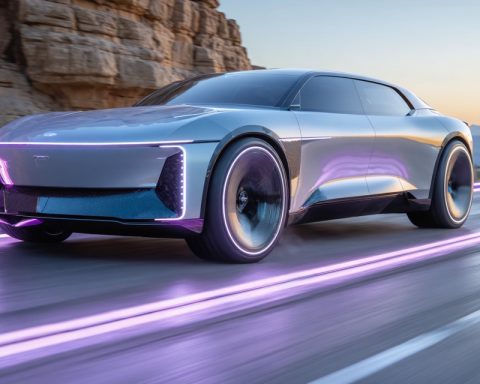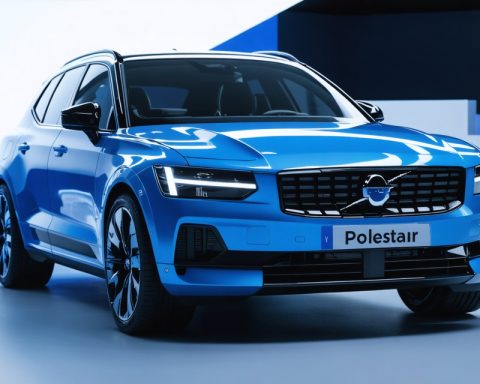Innovative Approaches to Smartphones
Smartphones have evolved, focusing not only on hardware performance but also on user experience. One controversial aspect is the imposition of system ads. Should high-end flagship phones follow the lead of brands like NIO Phone and eliminate system ads to provide a cleaner user experience?
The Brand’s Perspective
NIO Phone’s “0 system ads” feature sets it apart, emphasizing a pure, ad-free experience. While some argue for the necessity of ads to offset hardware costs, NIO’s approach prioritizes user satisfaction over ad revenue.
User Expectations and Market Dynamics
Consumers increasingly demand ad-free experiences, as highlighted by over 58% feeling ads disrupt their smartphone use. High-end brands like Apple set the standard for ad-free interfaces, enhancing brand loyalty and user satisfaction.
Shaping the Future of the Market
As consumer preferences lean towards ad-free experiences, smartphone manufacturers may need to reconsider their ad strategies. Brands offering cleaner experiences could gain a competitive edge in the market, reshaping the smartphone industry landscape.
Striking a Balance
While performance may drive smartphone sales, addressing user preferences for ad-free experiences is crucial. Brands that cater to these demands stand to win over discerning consumers seeking premium offerings without intrusive ads.
Anticipating Market Trends
With emerging brands focusing on ad-free experiences, the future of high-end flagship smartphones may see a shift towards cleaner, more user-centric designs. As technology advances and user preferences evolve, brands that prioritize user experience without ads may lead the market.
Conclusion
The debate over system ads in high-end smartphones underscores the evolving landscape of consumer preferences. By prioritizing ad-free experiences, brands can enhance user satisfaction, drive loyalty, and potentially reshape the market in favor of cleaner, user-centric smartphones.
Enhancing User Privacy and Security
Looking beyond the debate on system ads, another critical aspect of high-end flagship smartphones is the focus on user privacy and security. With the increasing reliance on smartphones for sensitive tasks like mobile banking and personal communication, ensuring robust security measures is paramount. How do high-end brands address privacy concerns, and what measures are in place to safeguard user data?
Answer: High-end flagship smartphones often integrate advanced security features such as biometric authentication, secure enclaves for sensitive data storage, and regular software updates to address vulnerabilities. Brands like Samsung and Google have invested heavily in encryption technologies to protect user information from cyber threats.
Environmental Sustainability and Ethical Sourcing
As consumers become more environmentally conscious, questions surrounding the sustainability practices and ethical sourcing of materials used in flagship smartphones have gained prominence. Are high-end brands making efforts to reduce their environmental impact, and how transparent are they about their supply chain practices?
Answer: Some manufacturers, such as Apple and Fairphone, have made commitments to reduce their carbon footprint and promote ethical sourcing of materials. Initiatives like using recycled materials in phone components and partnering with suppliers who adhere to fair labor standards demonstrate a growing awareness of environmental and social responsibility in the industry.
Advantages and Disadvantages of High-End Flagship Smartphones
Advantages:
1. Cutting-edge technology: High-end smartphones often feature the latest innovations in hardware and software, providing a premium user experience.
2. Superior performance: Flagship devices offer top-of-the-line processors, cameras, and displays, ensuring smooth operation and high-quality output.
3. Status symbol: Owning a high-end flagship smartphone can signify prestige and luxury, appealing to consumers who value brand image and exclusivity.
Disadvantages:
1. Cost: Premium smartphones come at a hefty price, making them inaccessible to budget-conscious consumers.
2. Planned obsolescence: Some critics argue that manufacturers design smartphones with limited longevity to encourage frequent upgrades, contributing to electronic waste.
3. Overemphasis on aesthetics: In the pursuit of sleek designs and thin profiles, compromises may be made on essential features like battery life and durability.
Challenges and Controversies
One of the key challenges facing high-end flagship smartphones is the balancing act between innovation and practicality. As brands strive to differentiate themselves in a crowded market, there is a risk of prioritizing flashy features over useful functionalities, potentially alienating users who prioritize performance and reliability.
Related Links:
1. Samsung
2. Google Store



















